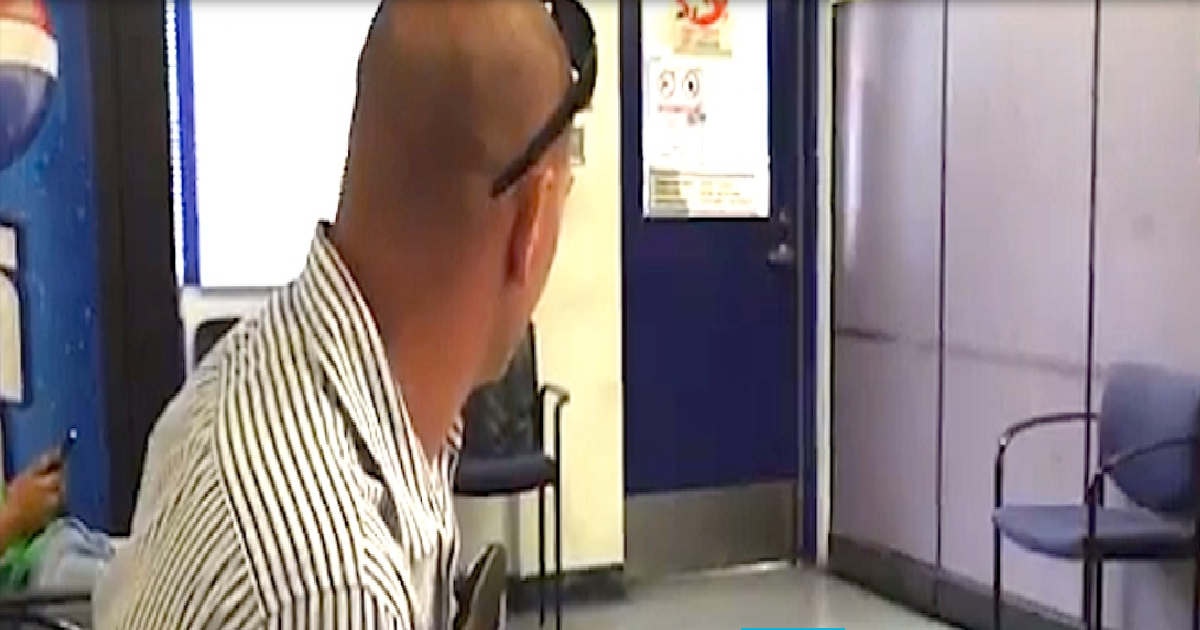As a dog owner, I understand how important it is to provide our furry friends with the best possible care, especially when it comes to their health. One common health issue that can affect dogs is cataracts. Cataracts can impair a dog’s vision, making it difficult for them to see the world around them.
If your dog has been diagnosed with cataracts, you’re probably wondering about the treatment options and how much they will cost. That’s why I’m here to help! In this article, I will explain the treatment cost for cataracts in dogs and what factors can influence the overall expenses.
Before we dive into the details, it’s important to note that the cost of cataract treatment for dogs can vary depending on several factors, including location, pre-surgery procedures, the condition of each eye, and post-surgery evaluations and medications.
Cataracts in Dogs Treatment Cost
- Cataract surgery for dogs can cost between $2,700 to $4,000.
- Factors that influence the cost include location, pre-surgery procedures, the condition of each eye, and post-surgery evaluations and medications.
- The cost of surgery varies depending on whether it is performed on one or both eyes and whether an intraocular lens (IOL) is inserted.
- Additional expenses include hospitalization, cone or recovery collar, antibiotics, eye drops, and post-op follow-up visits.
- Treatment costs can vary based on the location and the vet’s charges.
How Cataract Surgery Works for Dogs
Cataract surgery is a common procedure performed on dogs to restore their vision and improve their quality of life. This surgery involves the removal of the clouded lens and the insertion of an artificial intraocular lens (IOL) in its place. The procedure is typically performed under general anesthesia to ensure the comfort and safety of the dog.
During the surgery, the clouded lens is emulsified using ultrasonic waves, allowing for easier removal. The lens is replaced with an artificial IOL that helps to restore clear vision. The type of cataract surgery chosen can vary, with options such as phacoemulsification or extracapsular surgery available. These options may affect the overall cost of the procedure.
Before the surgery, pre-surgery procedures such as electroretinogram (ERG) and ocular ultrasound may be necessary to evaluate the dog’s eye health and determine their eligibility for the surgery. These additional steps ensure that the surgery is performed safely and effectively for the best possible outcome.
The cost of cataract surgery for dogs can vary depending on several factors, including the type of surgery chosen and the expertise of the veterinary ophthalmologist performing the procedure. It is important to consult with a qualified professional to assess all available options and determine the most suitable and cost-effective approach for your dog’s cataract surgery needs.
Benefits and Risks of Cataract Surgery for Dogs
Cataract surgery can bring about significant benefits for dogs, improving their quality of life by restoring their vision. One of the key advantages of this procedure is its ability to prevent several complications that can arise from untreated cataracts. These complications include glaucoma, lens luxation, retinal detachment, and lens-induced uveitis.
The success rate of cataract surgery in dogs is generally high, ranging between 85% to 90%. While the procedure is generally safe, it’s important to be aware of the potential risks and complications. These risks include rare occurrences of retinal detachment, glaucoma, bleeding, uveitis, and even blindness. Dogs undergoing cataract surgery require close monitoring and scheduled follow-up exams to ensure their post-operative condition remains optimal and to detect and prevent any potential issues.
Despite the risks involved, for most dogs, the benefits of cataract surgery outweigh any potential complications. Restoring a dog’s vision can significantly enhance their overall quality of life and improve their ability to engage with their surroundings. By regaining their vision, dogs can once again enjoy activities they may have struggled with, such as playing fetch, going for walks, or even interacting with other animals and their human companions.
Benefits of Cataract Surgery for Dogs:
- Restores vision and improves quality of life
- Prevents complications such as glaucoma, lens luxation, retinal detachment, and lens-induced uveitis
- Enables dogs to engage in normal activities
- Enhances interactions with other animals and their human companions
Risks of Cataract Surgery for Dogs:
- Rare complications such as retinal detachment, glaucoma, bleeding, uveitis, and blindness
- Requires close monitoring and follow-up exams
Diagnosing and Treating Cataracts in Dogs
When it comes to cataracts in dogs, early diagnosis is crucial. This can be done through visual examinations carried out by a veterinarian or a veterinary ophthalmologist. By thoroughly evaluating the dog’s eyes, these professionals can determine the presence and severity of cataracts.
Once a cataract is diagnosed, it’s important to explore treatment options as soon as possible. Surgery is the only effective treatment for cataracts in dogs, and timely intervention can prevent the progression of cataracts and the associated vision loss.
Surgical Removal of Cataracts
Surgical removal of cataracts is recommended for mature cataracts, as advanced cases can lead to blindness and other eye complications if left untreated. During the surgery, the clouded lenses are removed and replaced with artificial intraocular lenses (IOLs). This procedure is typically performed under general anesthesia.
It’s important to note that non-surgical treatments or home remedies do not effectively treat cataracts in dogs. Surgery remains the gold standard for addressing this condition and restoring a dog’s vision.
Considering Treatment Options
When it comes to treating cataracts in dogs, surgery is the primary option. However, it’s essential to consult with a veterinary ophthalmologist to discuss the specific treatment plan for your dog. Factors such as the dog’s overall health, age, and specific eye condition will be taken into consideration to ensure the best possible outcome.
Treatment costs can vary based on different factors, including the type of surgery, the expertise of the veterinary ophthalmologist, and the location. While cataract surgery for dogs can be a substantial investment, the benefits of restoring vision and improving a dog’s quality of life often outweigh the expenses involved.
Factors Affecting the Cost of Cataract Surgery in Dogs
The cost of cataract surgery in dogs can vary depending on several factors. Let’s take a closer look at what influences the overall cost.
The Type of Surgery
The choice of Cataract removal method is an important factor in determining the cost. Phacoemulsification, a more advanced and precise technique, may be more expensive than extracapsular surgery. The method chosen will depend on the specifics of your dog’s condition and the recommendation of the veterinary ophthalmologist.
Pre-Surgery Procedures
Prior to the surgery, your dog may require certain diagnostic tests such as an electroretinogram (ERG) and ocular ultrasound. These procedures help the veterinarian assess the dog’s eligibility for surgery and determine the best approach. The cost of such pre-surgery procedures is an additional component to consider.
Expertise and Location
The experience and skill of the veterinary ophthalmologist performing the surgery can impact the cost. Highly specialized and renowned ophthalmologists may charge higher fees for their services. Additionally, the geographic location of the clinic or hospital can also influence the overall cost due to varying expenses and economic factors.
Number of Eyes and Intraocular Lens (IOL)
The cost of cataract surgery may differ depending on whether one or both eyes need treatment. The procedure for both eyes will likely incur higher costs. Furthermore, the insertion of an intraocular lens (IOL) can also affect the total expense of the surgery. The additional cost of IOLs should be taken into consideration.
To get a precise estimate of dog cataract surgery cost, it is recommended to consult with a veterinary ophthalmologist who can evaluate the specifics of your dog’s case and provide an accurate cost assessment.

Canine Cataracts and Breed Susceptibility
Did you know that certain dog breeds are more susceptible to hereditary cataracts? If you own an American cocker spaniel, Boston terrier, golden retriever, miniature poodle, miniature schnauzer, or Siberian husky, it’s important to be aware of this potential health issue. Regular vet checkups are essential for these breeds to monitor their eye health and detect cataracts early.
Hereditary cataracts can start causing vision problems in dogs as young as 8 weeks old and can progress to blindness by the time they are 2 to 3 years old. It’s crucial to stay proactive and seek early diagnosis and treatment to maintain your furry friend’s quality of life. Additionally, dogs with diabetes are also at an increased risk of developing cataracts.
Affordable Options for Cataract Treatment in Dogs
Cataract surgery in dogs can be expensive, but there are ways to make it more affordable. Here are some options pet owners can explore:
1. Enroll in Pet Insurance
Pet insurance can help cover the costs of cataract surgery and other necessary procedures. By enrolling in pet insurance before cataracts develop, you can have peace of mind knowing that you have financial assistance if your dog needs treatment.
2. Comparison Shop for Veterinary Ophthalmologists
Not all veterinary ophthalmologists charge the same fees for cataract surgery. By comparing prices and services offered by different specialists, you can find one that suits your budget without compromising on the quality of care for your dog.
3. Explore Financing Options or Payment Plans
Some veterinary clinics offer financing options or payment plans to help ease the financial burden of cataract surgery. This allows you to spread out the cost of treatment over a period of time, making it more manageable.
4. Consider Veterinary Schools
Many veterinary schools have teaching hospitals that offer lower-cost cataract surgery for dogs. Since these surgeries are performed by experienced veterinary students under the supervision of qualified faculty, they can be a more affordable option without compromising the quality of care.
5. Seek Financial Assistance
There are organizations and programs dedicated to helping pet owners with veterinary expenses. These organizations provide financial assistance or grants to eligible individuals who are struggling with the cost of cataract surgery and other veterinary treatments. It’s worth researching and reaching out to these organizations to see if you qualify for any assistance.
Remember, affordable cataract treatment for dogs is possible with careful planning, research, and exploring different options. Taking proactive steps to address your dog’s cataracts can help improve their quality of life and ensure they receive the care they need.

Conclusion
Cataract surgery for dogs can be a costly procedure, but the benefits it provides are invaluable. By restoring vision and preventing potential complications, cataract surgery greatly enhances a dog’s quality of life. However, the exact cost of the surgery can vary depending on factors such as the type of surgery chosen, the expertise of the veterinary ophthalmologist, and the geographical location.
To help manage the expenses, pet insurance can be a valuable resource. Considering pet insurance early on can help mitigate the costs associated with cataract surgery and other veterinary expenses. It is also beneficial to be proactive in seeking early diagnosis and treatment. Regular check-ups and monitoring of a dog’s eye health can help identify cataracts at an early stage, allowing for timely intervention and potential cost savings in the long run.
While cataract surgery for dogs may seem expensive, the long-term benefits and improved quality of life make it a worthwhile investment. By prioritizing their pet’s well-being and exploring options such as pet insurance and early intervention, pet owners can ensure that their dogs receive the best possible care for cataracts.






